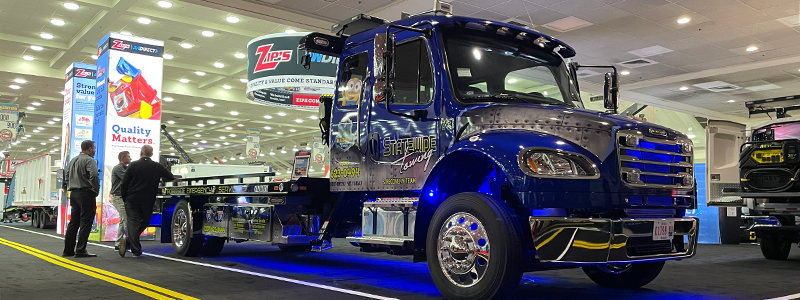Which Shackle Is Right For You?

Types of Pins
Before we can fully discuss types of shackles, you should know there are different types of bolts and pins that can be used with different shackles. They offer different strengths, and some slings can only use specific types.
Screw Pin
Inserted through the ears, screw pins are tightened down by screwing them into place. They are quick and easy to both connect and disconnect. However, they are not recommended for permanent applications as they can become loose if something like a sling used in a choker hitch is used as it can cause the screw pin to rotate or twist.
Shop all Screw Pin Shackles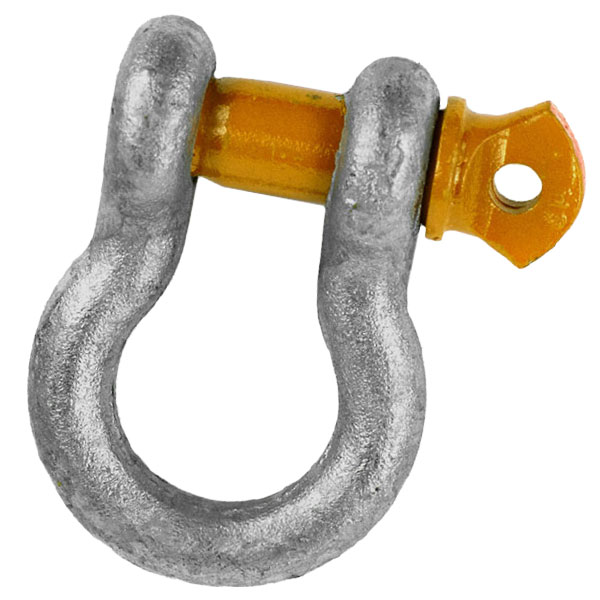
Round Pin
Much like the screw pin, a round pin is inserted through the ears. However, it does not have any threads. Instead, it’s held in place by a cotter pin. While the operator doesn't need to worry about becoming loose for the reasons a screw pin would, it should not be used for overhead lifting, side loading, or loading multiple slings. Rather, it is very common in tie-downs, suspension and towing.
Shop all Round Pin Shackles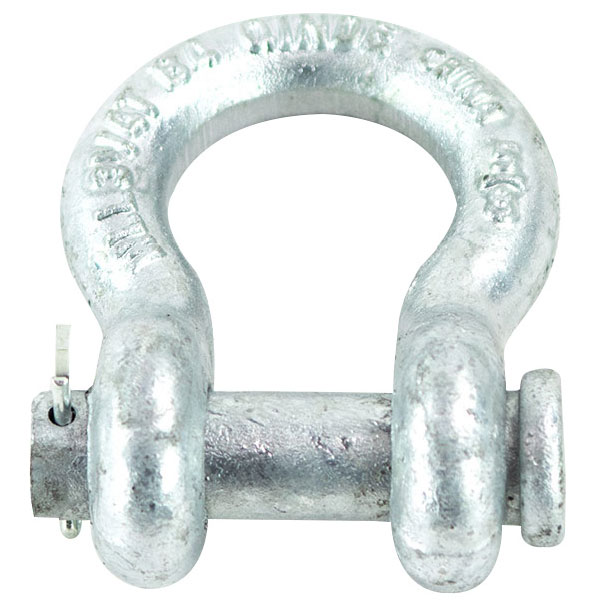
Bolt Type Pin
For long-term applications, the bolt-type pin can be used when either a screw pin or round pin could be used. This secure pin works by combining a bolt, nut and a cotter pin. Because of this, they do not risk rotating like a screw pin while still being able to perform overhead lifting, side loading and loading multiple slings.
Shop all Bolt Type Pin Shackles
Types of Shackles
When you go about getting the right shackle, the first step is making sure you know the best type of shackle for the job. Shackles are categorized by their shapes, and that helps determine what kinds of jobs they perform well in as well as how you use them.
Anchor Shackle
An anchor shackle is identified thanks to its larger “O” shape which makes it good for sideloading or using multiple sling leg connections. If you do this, it should be noted that this does reduce the working load limit. It can be placed through a chain or an anchor point on equipment in order to attach it for lifting. Anchor shackles have the ability to also join two pieces of chain or rigging. A variant of the anchor shackle is the bow shackle. It typically has an even larger bow area than most anchor shackles; however, they are used interchangeably.
Shop all Anchor Shackles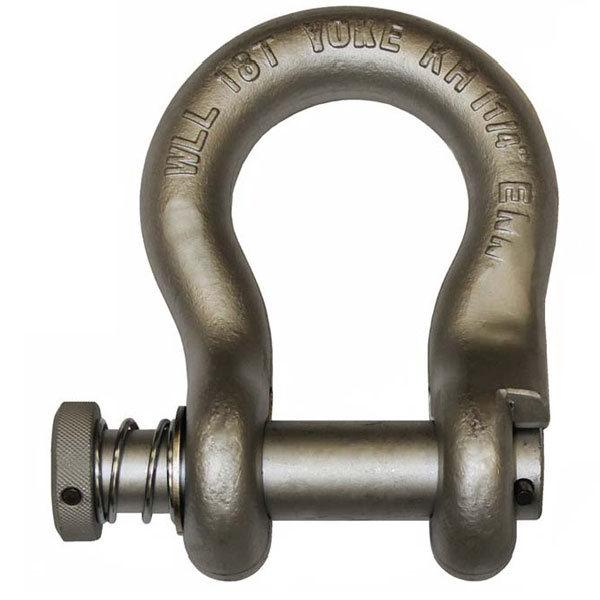
D-Ring Shackle
Also known as chain shackles, D-ring shackles get their name from the D-shaped bow that it has. These shackles are only rated for inline lifting. It cannot be sideloaded or loaded with multiple slings. However, it is great at ensuring that the lift is vertical.
Shop all D-Ring Shackles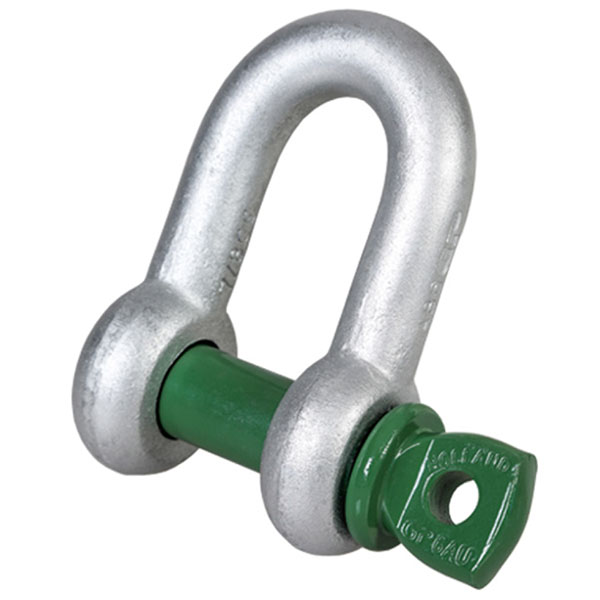
Web Shackle
Web shackles are used to attach to the end of a web sling. It has a wider base that prevents the sling’s eye holes from bunching. On top of that, it distributes the weight more than the anchor shackle does. Finally, it eliminates the need for a thimble eye.
Shop all Web Shackles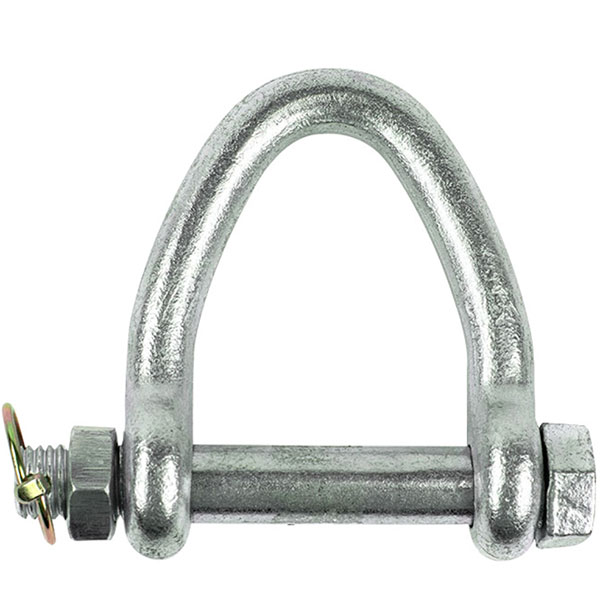
Soft Shackle
Made of synthetic materials, soft shackles are great for a variety of applications. Thanks to their pliable structure, they can easily be set up and are very tight. They do not require additional tools to use. And, because of how they are made, they float.
Shop all Soft/Synthetic Shackles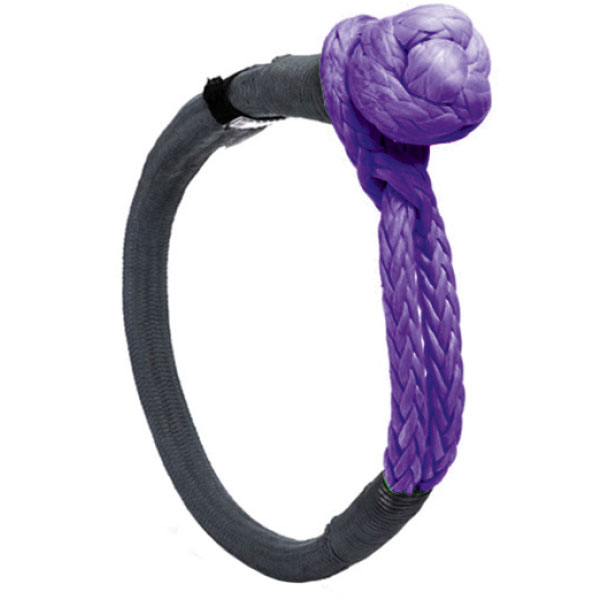
Sling Shackle
A sling shackle has a flat area where the bow of an anchor shackle would be rounded. This spreads out the load on the eye of the sling, allowing it to use its full working load limit. On top of that, it prevents slings from bunching or pinching, expanding their lifespans.
Shop all Sling Shackles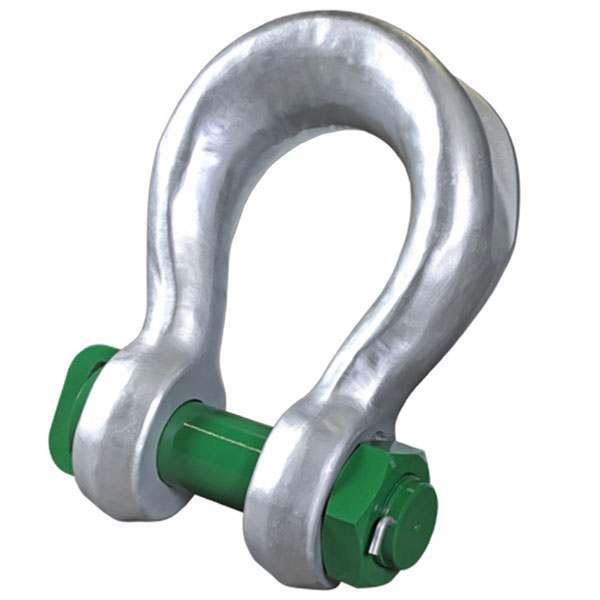
Materials
Of course, you also need to know what they’re made of as that adds another layer of advantages. Different environments and different jobs have different elements that you need to consider when choosing your shackle.
Synthetic
Made of synthetic plasma rope, synthetic shackles are strong yet also lightweight. Because of their make up, they don’t corrode, rust or damage paint. This lends them very well to more fragile lifts or lifts in environments where mud and snow can be a problem.
Carbon Steel
With a design factor of 6:1, carbon steel is a reliable and common material for shackles to be made of. They also tend to be more ductile than alloy steel shackles.
Alloy Steel
Stronger than carbon steel, alloy steel has a design factor of 5:1. They’re also capable of handling the same working load limits that a carbon steel shackle can while also being smaller.
Stainless Steel
Stainless steel has the greatest resistance to corrosion. This makes it great for wet environments and marine applications. If you need a shackle that can resist corrosion and rust, but you don't need as much protection as stainless steel provides, you can pick up one made from galvanized steel. Coated in zinc oxide, galvanized steel works great in snow, mud, rain and other corrosion-causing conditions.
Other considerations
There is more than just the type of shackle or what it’s made of that you need to think about. Safety considerations need to be taken seriously. For example, every shackle body should have the name or trademark of its manufacturer, rated load and size. This ensures you know exactly what it is capable of. You should know the same information when it comes to pins. Regardless of what you’re doing, be sure to never exceed the working load limit.
Conclusion
Shackles are an important part of a variety of tasks. Knowing which shackle will work for you is an important step. Hopefully, you have a better understanding of them. With that understanding, we have plenty of shackles for you to purchase at Zips.com. Or, you could take some time to read our other blogs on rigging.


%20blog%20thumbnail.png)
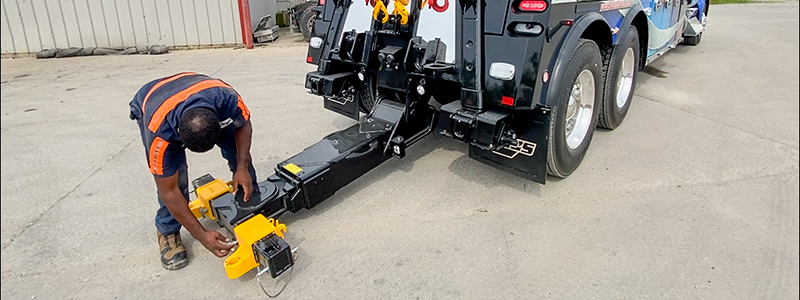

%20blog%20thumbnail.png)
